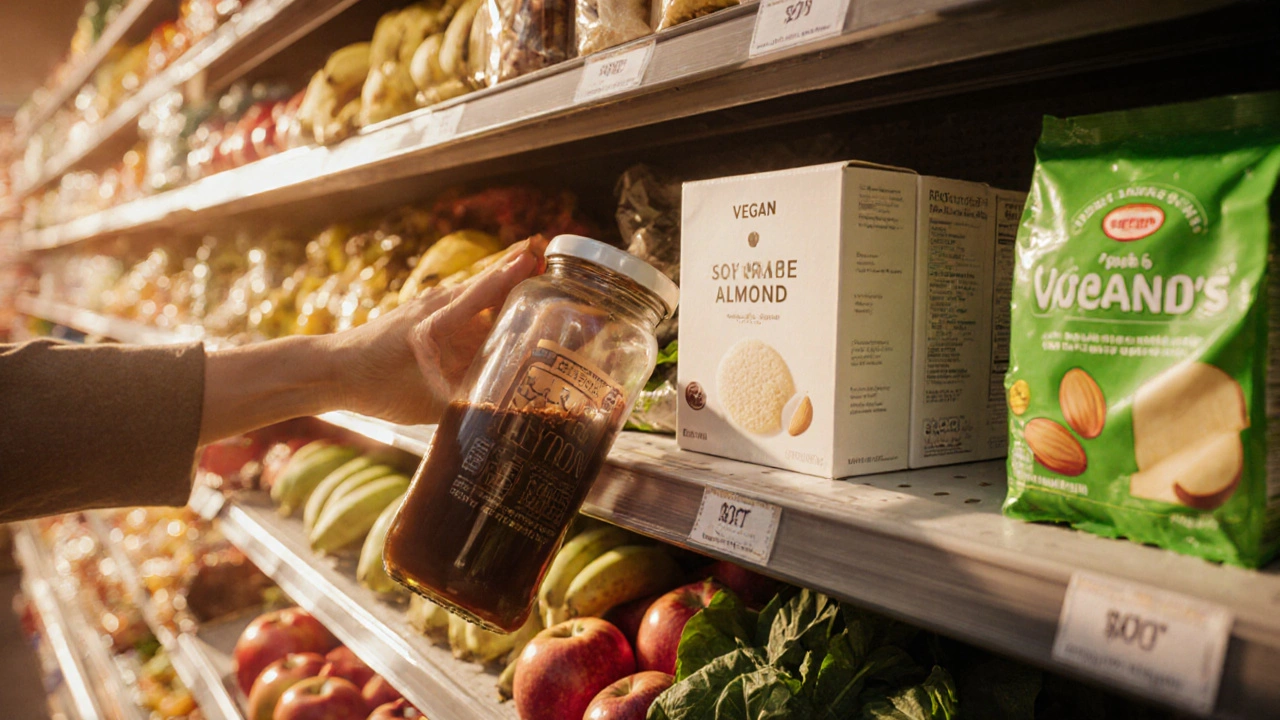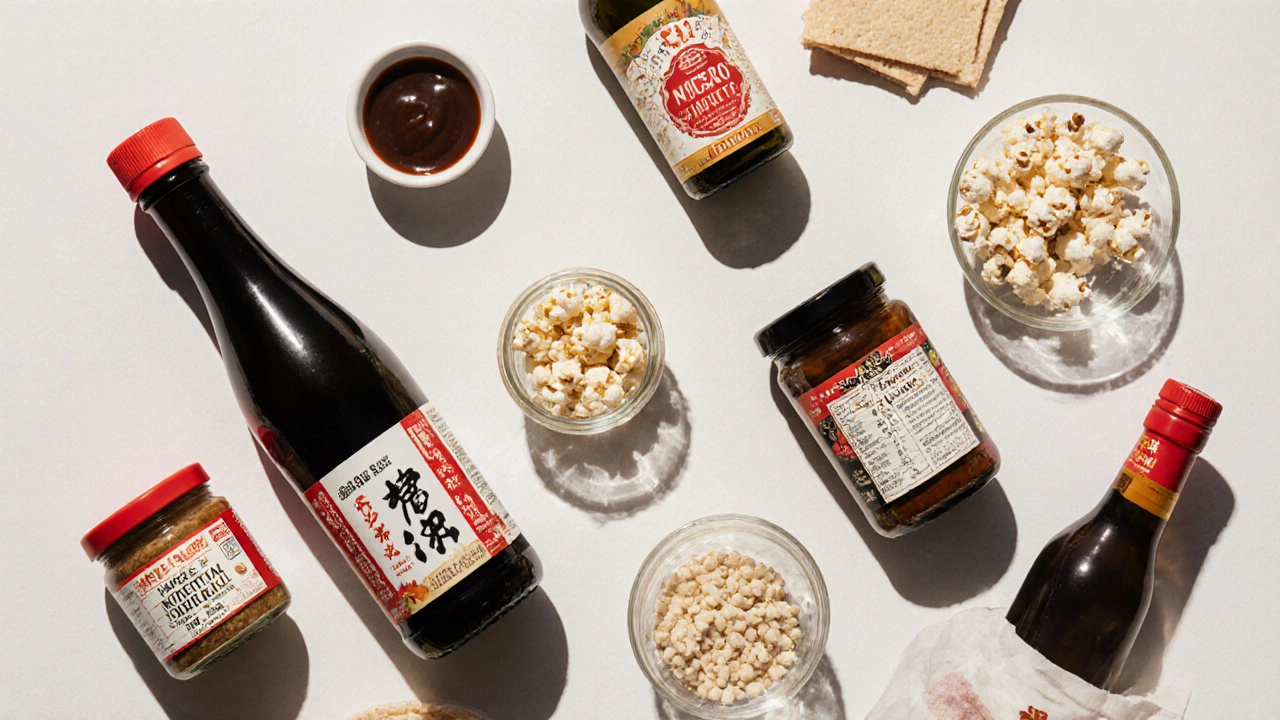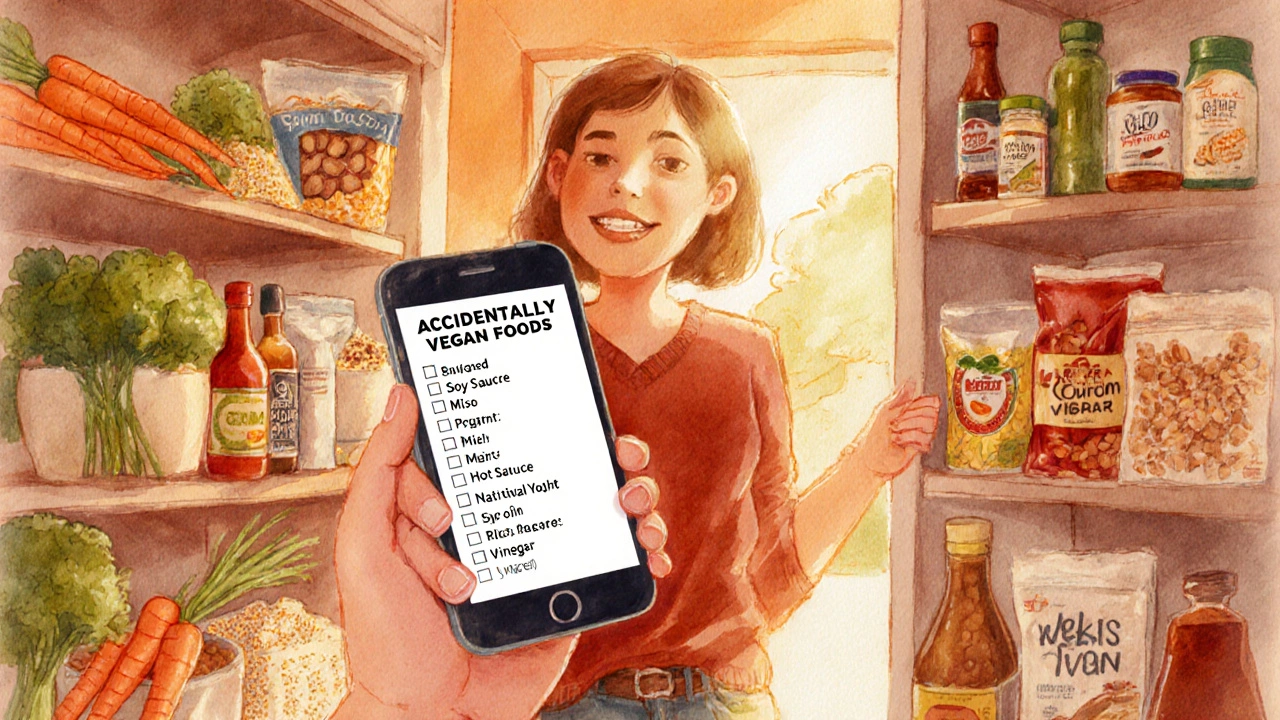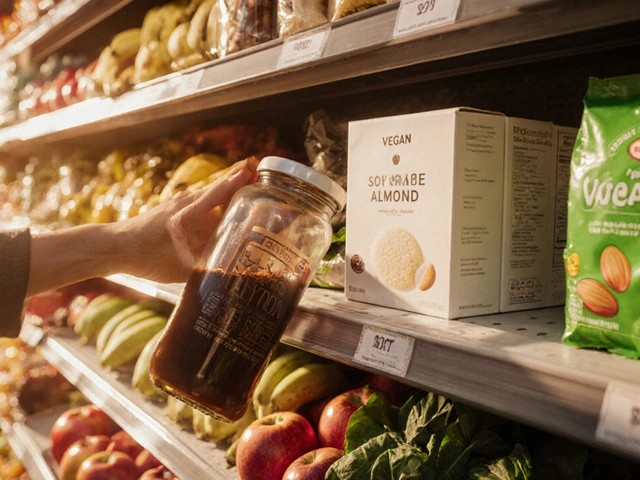
Accidentally Vegan Food Checker
Soy Sauce
Traditional brewed soy sauce is vegan.
Nutritional Yeast
A deactivated yeast with cheesy flavor.
Olive Oil
Pure extra-virgin olive oil is vegan.
Hot Sauce
Most are vegan, check for fish sauce.
Plain Popcorn
Air-popped kernels with sea salt are vegan.
Rice Cakes
Made from puffed rice and salt.
Ever stare at a grocery shelf and wonder if there’s anything you can grab that’s already vegan, even though the package never touts it? You’re not alone. Below is a practical rundown of foods that are accidentally vegan foods - items that contain no animal products by default, but often slip under the radar because they’re not marketed as “vegan.” Knowing these can save you time, money, and endless label‑checking.
What Makes a Food “Accidentally Vegan”?
In simple terms, a food is accidentally vegan when its formulation contains no meat, dairy, eggs, honey, or any animal‑derived additives, even though the brand doesn’t label it as vegan. This usually happens with whole‑food staples, certain condiments, and some processed snacks that were designed for a broad audience and never needed to mention animal ingredients.
Understanding why this occurs helps you spot more of them. Manufacturers often use basic ingredients (flour, water, salt) that are plant‑based, and they don’t feel the need to add a vegan claim. However, hidden additives like whey, casein, or animal‑based emulsifiers can sneak in, turning a potentially vegan product into a non‑vegan one.
Everyday Whole‑Food Picks
The simplest way to guarantee vegan status is to stick to whole foods that don’t undergo heavy processing. Below are the main groups, each introduced with microdata for easy reference.
Fruits are naturally vegan, providing vitamins, fiber, and natural sugars without any animal involvement. Common choices include apples, bananas, berries, mangoes, and citrus.
Vegetables are also inherently vegan. Leafy greens (spinach, kale), cruciferous veggies (broccoli, cauliflower), root crops (carrots, sweet potatoes), and nightshades (tomatoes, peppers) all qualify.
Grains such as rice, quinoa, oats, barley, and millet are vegan staples. They’re versatile for breakfast bowls, side dishes, or even dessert bases.
Legumes (beans, lentils, peas, chickpeas) deliver protein, fiber, and minerals. They’re the backbone of many plant‑based meals.
Nuts & Seeds like almonds, cashews, chia, flax, and pumpkin seeds provide healthy fats and crunch. They’re great for sauces, toppings, or snacks.
Surprising Processed Items That Are Often Vegan
Many pantry items look like they could contain hidden animal ingredients, but a good number are actually vegan by accident. Below are the top contenders.
- Soy sauce - Traditional brewed soy sauce is a blend of soybeans, wheat, water, and salt. It contains no animal products unless fortified with additives.
- Miso paste - Made from fermented soybeans (sometimes with barley or rice). Plain miso is vegan; flavored varieties may include fish stock.
- Nutritional yeast - A deactivated yeast sold as flakes or powder, prized for its cheesy flavor and B‑vitamins.
- Olive oil - Pure extra‑virgin olive oil contains only olives and sometimes a tiny amount of lemon juice for flavor.
- Hot sauce - Most hot sauces are just peppers, vinegar, and salt. Check for fish sauce or honey in specialty versions.
- Plain popcorn - Air‑popped kernels with sea salt are vegan. Pre‑flavored butter popcorn often contains dairy.
- Rice cakes - Made from puffed rice and salt, they’re a low‑calorie vegan snack.
- Vinegar - Distilled white, apple cider, and balsamic vinegars are plant‑derived. Malt vinegar may contain trace gluten but stays vegan.
When you’re grocery shopping, the key is to look for an ingredient list that sticks to these plant‑based components. If a product only lists water, salt, spices, and the base ingredient (like soybeans), it’s very likely an accidentally vegan item.

How to Verify Vegan Status Quickly
- Read the ingredient list from top to bottom. Any mention of whey, casein, gelatin, or honey means it’s not vegan.
- Search for common hidden animal additives:
- “Lactose” (milk sugar)
- “Carmine” (cochineal) - a red pigment from insects
- “Isinglass” (fish bladder) - used in some clarification processes
- “Mono‑ and diglycerides” - can be plant‑ or animal‑derived; check manufacturer info
- Check the packaging for a vegan symbol or label. Absence doesn’t mean non‑vegan; it just means the company didn’t apply for certification.
- When in doubt, visit the brand’s website or contact their customer service. Many companies have FAQs about their ingredient sourcing.
These steps only take a minute but can spare you the embarrassment of ordering a dish that’s not actually vegan.
Quick Reference Table
| Food Category | Typical Vegan Ingredients | Red Flags to Watch |
|---|---|---|
| Soy sauce | Soybeans, wheat, salt, water | Added MSG, fish sauce, honey |
| Miso | Fermented soy, rice/barley | Fish stock, bonito flakes |
| Nutritional yeast | Deactivated yeast, fortified B12 | Added cheese flavorings from dairy |
| Olive oil | Pure olives | Added flavor oils with butter |
| Hot sauce | Peppers, vinegar, salt | Fish sauce, honey, dairy cream |
| Plain popcorn | Popcorn kernels, sea salt | Butter flavor, cheese powder |
| Rice cakes | Puffed rice, salt | Seasoned varieties with whey |
| Vinegar | Fruit juice, fermented alcohol | Added sugar syrup from animal source |
Common Mistakes to Avoid
Even seasoned vegans slip up. Here are a few pitfalls and how to dodge them:
- Assuming “natural” means vegan. “Natural flavor” can be derived from animal sources.
- Overlooking “processed” herbs. Some dried herb blends contain maltodextrin derived from animal starch.
- Skipping the fine print on “organic”. Organic certification doesn’t guarantee vegan status.
- Relying on color alone. White or clear liquids can hide animal‑based thickeners.
Keep a mental checklist: ingredients → additives → brand statements. This habit will quickly filter out non‑vegan items.

Mini‑FAQ
Frequently Asked Questions
Are all breads automatically vegan?
Not always. Basic white or whole‑grain breads that list flour, water, yeast, and salt are vegan. However, many varieties contain butter, honey, milk, or eggs. Always check the ingredient list.
Can I trust “vegetarian” labels for vegan safety?
Vegetarian labels only guarantee no meat, but dairy, eggs, and honey may still be present. Vegan certification is the only reliable badge for a completely plant‑based product.
Is soy milk always vegan?
Most plain soy milks are vegan, but flavored versions can include honey, whey protein, or added caramel color derived from animal sources. Look at the ingredient list for any non‑plant additives.
Do canned beans count as accidentally vegan?
Yes, plain canned beans (just beans, water, and salt) are vegan. Some canned varieties add bacon bits, cheese powder, or broth, so check the label.
What’s the safest way to snack on the go?
Carry whole‑food options like fresh fruit, raw nuts, or pre‑popped plain popcorn. If you need a packaged item, choose those with short, transparent ingredient lists that match the categories in the table above.
Next Steps for Building Your Accidental Vegan Pantry
Start with a quick audit of what you already have. Pull out any sauces, condiments, or snacks and compare them against the table. Replace any non‑vegan items with their vegan counterparts - for example, swap buttered popcorn for plain air‑popped kernels and drizzle with olive oil if you like.
Finally, keep a running list on your phone of foods you’ve confirmed as vegan. Over time you’ll notice patterns (e.g., most Asian sauces are safe, most dairy‑based spreads are not) and shopping will become second nature.
Enjoy the freedom of knowing you can grab a snack or spice up a meal without a second‑guessing every label. Happy eating!








Write a comment